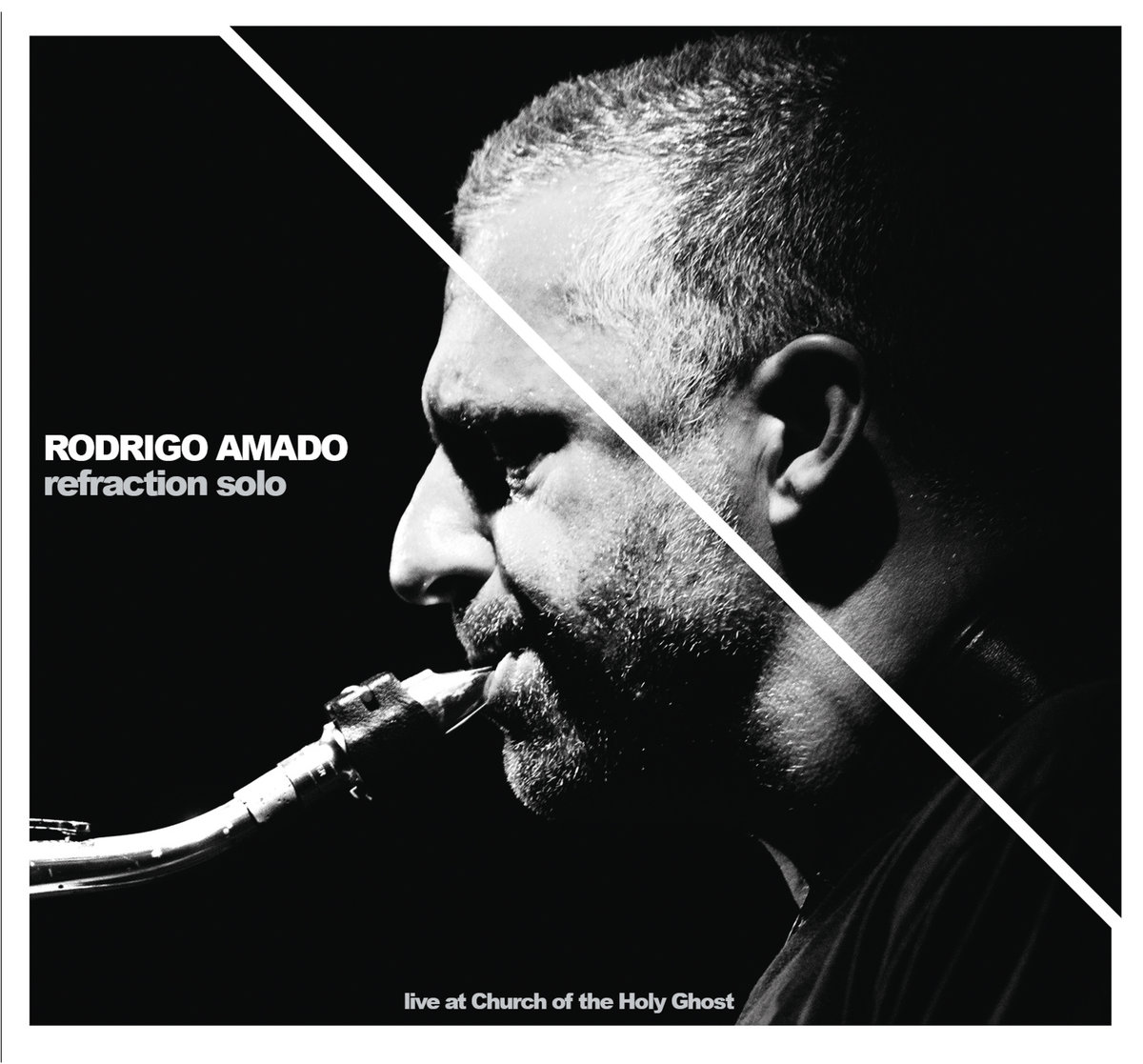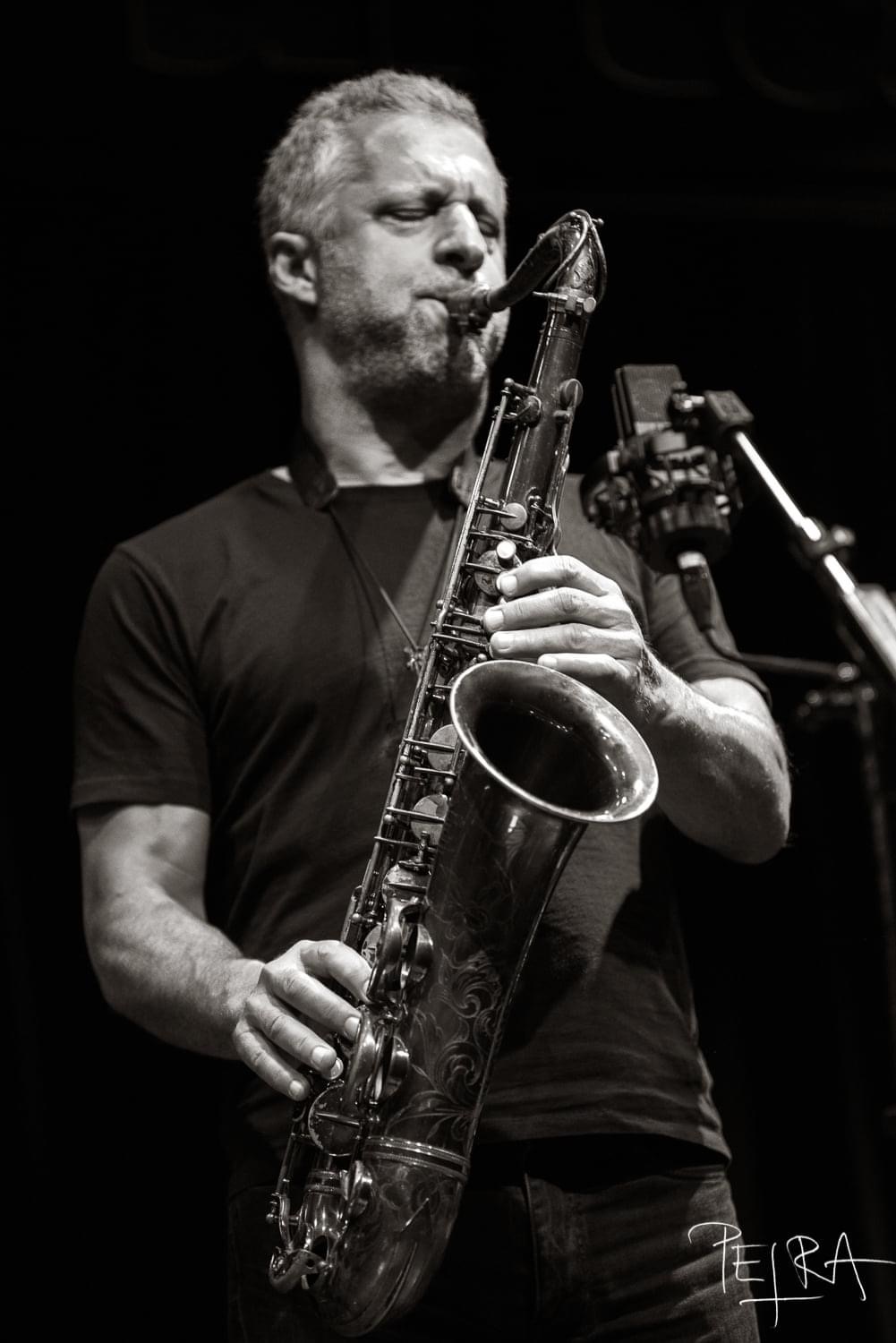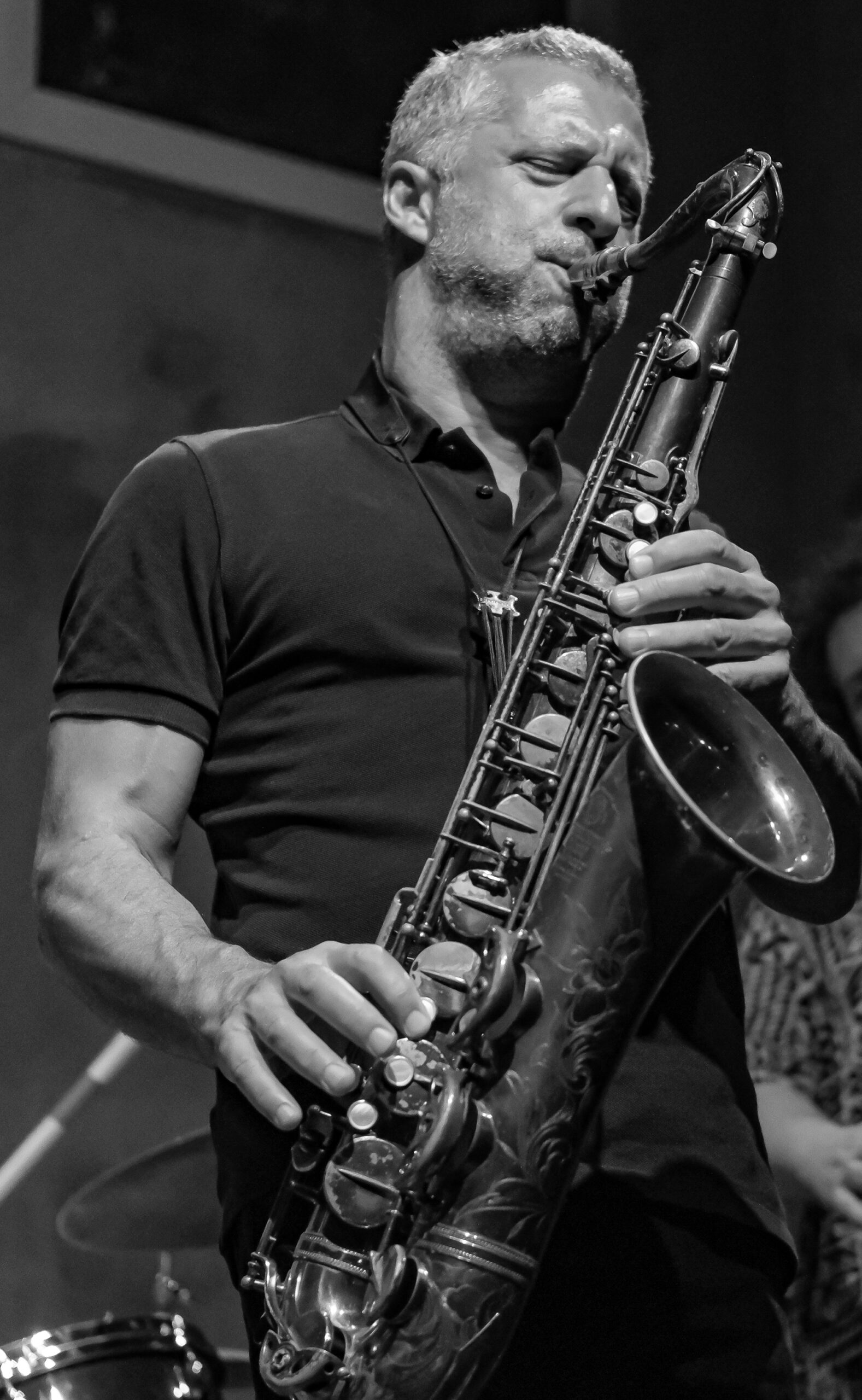Rodrigo Amado
‘Refraction Solo’ is the first solo album by Lisbon-based tenor saxophone player and photographer Rodrigo Amado, recorded in one day at the Church of The Holy Ghost in Caldas da Rainha, Portugal.

“I had to reinvent myself and develop new strategies”
Why did you want to make a solo saxophone album?
Rodrigo Amado: I didn’t. I was drawn into it. When we went into the pandemic years I had never thought of releasing a solo album. I have a huge respect for the amazing legacy of saxophone solo albums, with absolute classics by masters like Anthony Braxton, John Butcher, Evan Parker, Roscoe Mitchell, among many others. That long period of confinement was particularly productive for my practice routine. The everyday distractions were gone and the general “deserted vibe” of places that were usually full of people was propitious to a stronger focus and concentration. So, I found myself spending countless hours in the studio, practicing and researching. After some months my usual practice routine started getting too predictable, even boring, so I had to reinvent myself and develop new strategies. That’s when I decided to go back to the roots, and I started picking up classic jazz themes that were important in my development process, all these classic songs by Rollins, Cherry, Coleman, Rivers, Coltrane or Monk. I would just play the heads, over and over, with all kinds of variations in dynamics, intonation, speed, attack, and then would slowly start to deconstruct them, trying to identify the core elements in the melody, and getting rid of all the rest. In the end, I would get to a point where the original tune was virtually unrecognizable but where I could still identify the original impulse, almost like identifying the original emotion that led to that song. My goal was to incorporate these core elements into my own improvised language, in a refraction process that started in the original song, passing through me and ending up in an improvised statement that relates to the root. All this activity led to a strong urge to perform solo, I felt I had things to say that were connected to the solo discipline. I did a few shows right off the pandemic and when I started listening to the recorded materials I realized I could actually release an album.
What do you take from playing with others into your solo work? What do you take from playing solo into playing with others?
As an improviser, playing with others and playing solo is all part of the same whole. It’s an ever expanding learning process where the goal is to develop your instincts to be as sharp and fast as possible and exercise your technique so that the delay between brain and instrument becomes almost non-existent. When improvising, we’re constantly making split second decisions, reacting in real time to other musicians’ inputs. This process needs to be fast! Having said that, the real development comes from playing with others, of course, particularly if you play with better and more experienced musicians. Working with masters like Alex von Schlippenbach, Joe McPhee or Peter Evans has not only influenced but deeply transformed my music. A very tangible transformation, very real. After the first concerts I did with them, I felt my music was not the same anymore – like years of condensed knowledge and experience were flowing into my playing, into my instincts. When I finally get to play solo, all these elements and influences are there. But what really surprised me in the process that led to the solo album was the fact that I felt I was “communicating” with those masters, being fed by their energy and presence.
“Improvised music might be, right now, the most relevant discipline in music”
You made the album last year. Why did you think this was the “right time” to make a solo album?
As I told you, I was drawn into it. But, in fact, I believe the context was very important for all this to happen. With all the craziness going on in the world right now, it feels like a privilege to withdraw to your own personal creative space and be able to record a statement that’s all about spirituality, freedom, creativity, love and communicating with the roots. We all need these kinds of energies and they’re more relevant than ever. Also, there’s the element of truth contained in improvised music. You can’t fake it and all your playing is directly connected with who you are and the present moment. Improvised music might be, right now, the most relevant discipline in music. The abstract truth.
You recorded the album in a church, not in a studio. Why?
By the time the confinement was over, when I started doing all those solo shows, I was recording everything. I didn’t even consider doing the solo in the studio, it’s too lonely. When playing solo, more than ever, I need the energy from the audience and, definitely, the vibe from the performance space. The concert at that church was pretty special. There was this magnetic energy in the air. The fact that it was a church, although I’m not religious at all, certainly favored a spiritual connection with the masters. Also, the whole crew at Caldas da Raínha was absolutely amazing – great generous professional creative people. And last but not the least, my two daughters who love to hear me play but rarely have the chance to witness a concert, were there. So, that’s basically why it happened in this specific context.

You recorded the album in one day. How much did you play? How much of what you played was recorded? How did you decide which of the recordings would be used for the album?
The album is basically the whole concert, in the exact same sequence. I only edited out something like four minutes of music from the first song to make it vinyl friendly (although the first release is CD and digital only, I plan to release it as an LP). So, in this case, it was a simple process, although with some of my previous albums I spent months deciding what would be released from sessions that could be as long as three or four hours. I remember listening to this solo recording for the first time and being really impressed with the sound – warm and, without being too resonant, perfect in detail. Something that also contributed to the whole vibe of the recording was the fact that I was using a new horn that I was in love with, an old Selmer from 1951 that I had just found in Paris.
Do you remember what initially attracted you to the saxophone? Was it a record, a player, or the instrument itself?
I started to play the saxophone rather late, when I was 17. I had suffered a serious accident (went through a glass door) that left me immobilized for a long time and my mother asked what I wanted to help me spend the time. I didn’t hesitate and replied: a saxophone! By that time I was already totally obsessed with music, although I wasn’t still listening to jazz. My early references for the saxophone came from artists and bands like David Bowie, Roxy Music, Van Der Graaf Generator, King Crimson, Brian Eno, James Brown and many other rock, funk and pop bands. I wasn’t focusing on any player in particular. But everything changed after I got the saxophone. Together with it, my parents gave me three records that I totally worn out; a Charlie Parker compilation, Dexter Gordon’s ‘Go,’ and Phill Woods ‘Three for All.’ Also, my father had some Sonny Rollins (with an amazing version of ‘Sonnymoon for Two’) and Art Blakey’s ‘Three Blind Mice,’ with Wayne Shorter. Those were my earliest conscious influences. And then, very fast, came the others – Ornette Coleman, Archie Shepp, Booker Ervin, Tim Berne, Pharoah Sanders, Arthur Blythe, Julius Hemphill, Gerry Mulligan, Glenn Spearman, Steve Lacy, John Carter, Sam Rivers, Hamiet Bluiett, and so many others. But I always kept listening to all kinds of music.

Do you think it’s possible to play the saxophone without being linked to jazz? Do you feel like you carry the history of the instrument with you when you play it?
Yes, of course, there is definitely a “classical” school for the saxophone as there are numerous rock or pure experimental approaches. However, in jazz is where the saxophone reaches its highest relevance and power. In my specific case, I feel I connect more and more with the history of the instrument. ‘Refraction Solo’ is all about it. I choose to do it because my music can be rather abstract and I can incorporate elements of this tradition without losing that freedom, without being too literal and mimicking other players’ language. Also, I’m trying to be true to myself and to the roots that influenced me so deeply.
Joeri Bruyninckx
Headline photo: Rodrigo Amado by Cristina Marx – Ausland Berlin, September 2021
Rodrigo Amado Official Website / Facebook / Instagram / Bandcamp
Trost Records Official Website / Facebook / Twitter / Bandcamp




